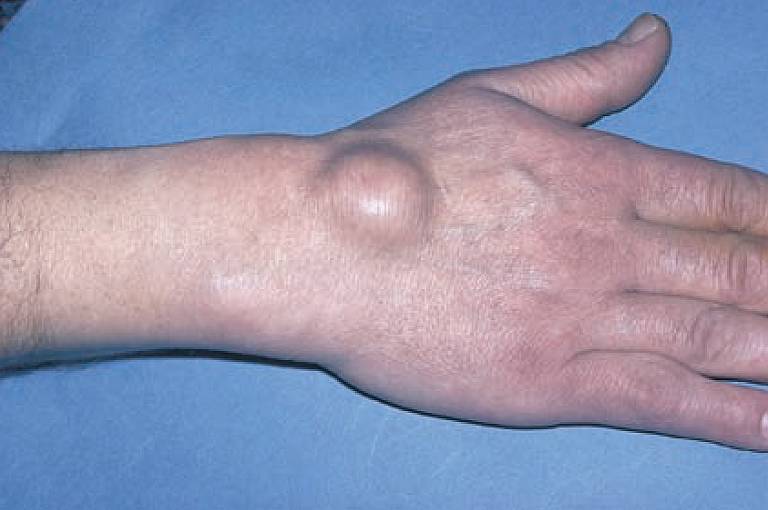This post is an answer to the Case – Painless Swelling on Dorsum of Wrist
What physical signs would you elicit to confirm the diagnosis?
The skin can be moved freely over the lump, as can the overlying extensor tendons, but it is tethered to the underlying capsule of the wrist joint. Confirm that the lump is cystic by fluctuation in two directions. These ganglia transilluminate brilliantly when a torch is applied to them – even in broad daylight.
Where else are these cysts commonly found?
The dorsum of the foot (arising from the joint capsule), on the flexor tendon sheaths of the fingers and on the peroneal tendon sheaths.
What is their cause?
Although they are so common, their aetiology is still something of a mystery, they may represent a benign myxoma of a joint capsule or tendon sheath, a hamartoma or myxomatous degeneration of the joint capsule or tendon sheath as a result of minor trauma.
What material does the cyst contain?
Mucoid fluid having the appearance of Wharton’s jelly of the umbilical cord. This is contained within the compressed collagen capsule.
What is the prognosis after surgical excision?
Recurrence is unfortunately quite common after surgical excision, and the patient must be warned of this. It is quite a tricky operation, which is performed under general or regional anaesthetic and in a bloodless field produced by a tourniquet to avoid leaving a fragment of the capsule of the cyst behind. Ganglia on the dorsum of the wrist, such as the one shown in the picture, commonly lead right down to the ligament between the scaphoid and the lunate.
SIMILAR CASE: Lumps on the Scalp

